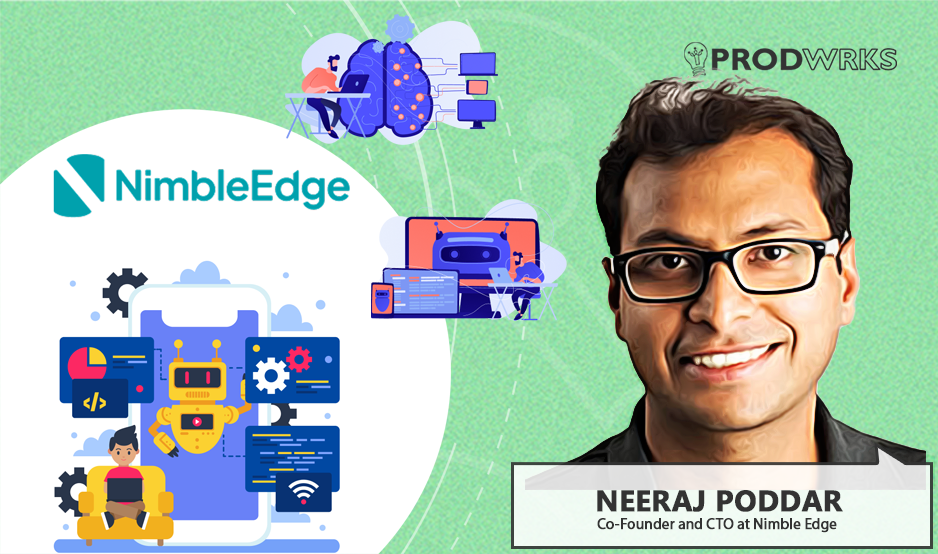
Take a moment to consider the clothes you’re wearing. Can you trace its journey? Not just from the store to your closet, but from the cotton fields where its life began. Can you name the farm, the spinning factory, the weaving unit? Do you know the chemical composition of the dyes or the volume of water used in their creation? What about the carbon footprint of the product’s long voyage across states or countries, finally landing in the store where you bought it?
For the majority of products we use, not just shirts, the answer to these questions is a resounding no. The modern supply chain, for all its logistical marvels, is a black box. Consumers are left to trust the brand’s tags or labels, but brands themselves often lack visibility beyond their immediate, or “Tier 1,” suppliers. This opacity has allowed waste, environmental degradation, and counterfeiting to fester.
Fortunately, this era of willful ignorance and opaqueness in supply chains is coming to an end. A confluence of regulatory pressure, consumer demand, and technological innovation is prying open the black box of supply chain traceability. At the heart of this transformation are companies like RePut.ai, heralding the new age of sustainability.
Founded by Anuj Bishnoi, Rohit Mahatma, and Amit Bishnoi, RePut is a B2B SaaS platform that positions itself as the essential infrastructure layer for bringing accountability to global supply chains. The rise of platforms like RePut in India signals a fundamental shift in how physical goods will be designed, sourced, manufactured, and sold.
For product leaders, this shift represents a new, non-negotiable data layer that will soon be as critical as a company’s ERP system. In a conversation with ProdWrks, RePut’s founder, Anuj Bishnoi, explains how he is building this foundational layer for sustainable supply chains in the world’s most complex systems.
Why Now? - The Upcoming Regulatory Tidal Wave
For decades, supply chain transparency was a “nice-to-have” feature, a marketing tool for ethically minded niche brands. Today, it’s a critical business imperative, driven by powerful regulations. The European Union’s Green Deal (launched in 2019) is the epicenter of this shift, creating a ripple effect across the globe.
One of the most potent instruments of this deal is the Carbon Border Adjustment Mechanism (CBAM). In simple terms, CBAM is a carbon tariff. It requires importers in the EU to report and eventually pay for the embedded carbon emissions of certain goods they bring into the union, such as steel, aluminium, cement, electricity, and soon textiles/garments.
The goal is to prevent “carbon leakage,” where EU companies relocate their carbon-intensive production to countries with less stringent environmental regulations.
"Companies all of a sudden are realising that this (CBAM) is going to be a mandate, starting 2026," Anuj explains, highlighting the urgency. "The penalties are coming. And now everybody is ready to go, and the government is pushing things forward.”
This isn’t just a European issue. Any company, be it in India, Vietnam, or Brazil, that wants to export must now meticulously track and report its carbon footprint. This requires visibility deep into their own operations and those of their suppliers. This is precisely the problem Anuj aims to solve with RePut.
Beyond CBAM, the concept of Scope emissions has also become the standard for carbon accounting:
Scope 1: Direct emissions from sources a company owns or controls (e.g., factory smokestacks, company vehicles).
Scope 2: Indirect emissions from the generation of purchased energy (e.g., the electricity used to power the factory).
Scope 3: All other indirect emissions that occur in a company’s value chain. This is the big one. It includes everything from the raw materials sourced to the transportation of goods, employee commuting, and even the “afterlife” of the product once the consumer is done with it.
This is the vast, tangled web of the supply chain. It’s where the majority of a company’s carbon footprint and its biggest reputational risks lie hidden.
Deconstructing RePut.ai: The 3 Pillars of Accountable Supply Chain
RePut’s response to these complex challenges is a modular platform designed to offer a holistic solution for end-to-end sustainability management in supply chains. It’s a suite of three core products designed to tackle the problem of supply chain opacity from every angle.
Anuj explains the platform’s architecture, revealing a deep understanding of the problem space, from foundational data collection to advanced analysis and circular economy enablement.
1. TraceChain: The Foundation of “Truth”
“It starts from tracing the tier one supplier. And then it goes to tier two, tier three to tier four, and likewise, to the nth network,” Anuj elaborates.
He explains, "We track even a simple button coming from a supplier. We go deep into the supply chain to trace the composition of the buttons. Whether it is plastic, metal, or wood. We go even more granular. If it is plastic, we find out if it is recycled plastic or not. So every minute detail or data is available with RePut."
This “sub-tier mapping” is the heavy lifting of supply chain transparency. To achieve it, RePut integrates its client’s existing systems, but more critically, provides tools to onboard and gather data from the long tail of smaller suppliers who may not have sophisticated ERPs.
The data (certificates of origin, quality reports, labour audits, material composition) is then recorded on a blockchain. This creates a tamper-proof ledger (a verifiable chain of custody), ensuring the integrity of the data once it’s captured. It is crucial for ensuring that the claims a brand makes on its final product are backed by an unalterable digital ledger. It’s a win-win for the brand as well as the consumers.
This tamper-proof “truth” layer becomes the bedrock upon which all other sustainability claims are built.
2. Zero Carbon: From Data to Decarbonization
"The data is already available for the ‘traceability’ part, thanks to TraceChain. So now assessment of the whole data should be so easy that the companies should not be using another platform to do scope 1, 2, 3 preparation," Anuj says.
Anuj explains that most companies can manage their Scope 1 (direct emissions) and Scope 2 (indirect emissions from purchased energy) with relative ease. The real beast is Scope 3, which is all other indirect emissions that occur in a company’s value chain.
Scope 3 includes everything from the raw materials a company purchases to the transportation of their goods and the end-of-life treatment of their products. It is, by far, the largest and most difficult portion of a company’s carbon footprint to measure.
According to information available on their website, RePut helps brands calculate their Scope 1, 2, and the notoriously difficult Scope 3 emissions, using a database of over 70,000 custom emission factors.
But the challenge with supply chain data is the sheer volume and heterogeneity. For larger organizations it can come from massive ERP systems like SAP, from simple Excel sheets for smaller suppliers, and sometimes, even from handwritten ledgers in remote facilities.
“What we did was create a very simple technology modelled after the humble OCR. It helps digitize and convert any format of data, be it digital, handwritten, or manual.”
"For example, if a company uses 44% air transport and less of sea freight (ships), that is something AI picks up and gives as insights to the CEO. It shows where the hotspots are and how to solve them, which straight away leads to emission reductions and cost savings.”
3. RePut Circle: Engineering a Circular Economy
“The shirt that I’m wearing, if it’s not tracked, will straight away go to the landfill. Or in the Indian case, from a shirt, it will become a ‘pocha’ (a cleaning rag),” Anuj illustrates. “It is very important that it gets tracked, traced, repurposed, and comes back into the supply chain to become a raw material again.”
"RePut circle enables ‘tier one’ to ‘tier n’ players to showcase their products… the recycled and restored and repurposed products, which can be available for anybody," says Anuj.
For example, the fibers from a recycled t-shirt may not be high-quality enough to make another t-shirt, but they could be perfect for carpets, insulation, or upholstery. RePut Circle facilitates this “material balance,” connecting sellers of recycled materials with buyers, ensuring that less goes to landfill and that companies can verifiably meet their Extended Producer Responsibility (EPR) obligations.
Anuj highlights that this is where the name of his company finds its truest meaning. To “Re-Put” materials back into the economy!
The Engine Room: How AI and Blockchain Create a Moat
The interplay of AI and blockchain on the RePut.ai platform is a symbiotic relationship where each technology solves specific parts of fundamental problems in the supply chain.
Blockchain provides the ground truth. It ensures the integrity and immutability of the data at the point of origin. It answers the question: “Can I trust this data?”
AI provides the intelligence. It takes that trusted, massive dataset and makes sense of it. It answers the question: “What does this data tell me, and what should I do about it?”
From identifying the hotspots in Zero Carbon to predicting supply chain disruptions in TraceChain, AI is what makes the vast repository of blockchain data meaningful and actionable.
This combination of AI and blockchain powers another critical offering by RePut – Digital Product Passports (DPPs). Mandated by the EU for several product categories, the DPP is essentially a digital ID for a physical product.
By scanning a unique QR code on any product, a consumer or regulator can instantly access its entire production and supply chain history stored on the RePut.ai platform. This includes material composition, chemical usage, energy footprint, factories involved, and even social metrics like female employment.
The Business Case: Beyond "Sexy" Sustainability
In a world today where, as Anuj puts it, “sustainability is sexy, and is selling,” I asked him how a company can justify the investment in a platform like RePut.ai beyond the marketing gloss. The answer lies in a convergence of risk mitigation, cost savings, and reputational enhancement.
1. Compliance and Market Access: This is the most immediate ROI. Without a robust traceability and carbon accounting system, access to key markets like the EU will become increasingly difficult and costly. Platforms like RePut are becoming the price of admission.
2. Operational Efficiency: As the AI hotspot example we showed earlier illustrates, deep visibility reveals inefficiencies. Optimizing logistics, reducing material waste, and lowering energy consumption are direct bottom-line benefits.
3. Enhanced Reputation and Consumer Trust: In an age of conscious mass market consumerism, provable claims of sustainability are a powerful differentiator. The DPP becomes a direct-to-consumer channel for telling this authentic story.
4. Resilience: By mapping the entire supply chain, companies can identify single points of failure and assess supplier risk, building a more resilient and agile operation that is less vulnerable to geopolitical shocks or climate-related disruptions.
The black box of the global supply chain, which for so long concealed waste, inefficiency, and environmental harm, is being illuminated. The work is complex, and the journey is just beginning.
But with the convergence of regulatory force and technological prowess, platforms like RePut.ai are providing the tools not just to see inside the box, but to fundamentally redesign it for a more sustainable and transparent future.
The era of accountability is here, and it’s being built, one data point at a time.



